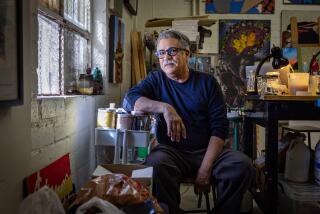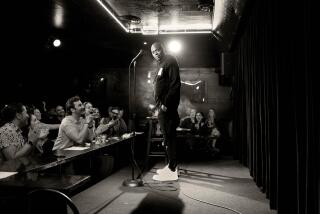Diplo and the Marlboro Man: The converging worlds of L.A. photographer Jim Krantz
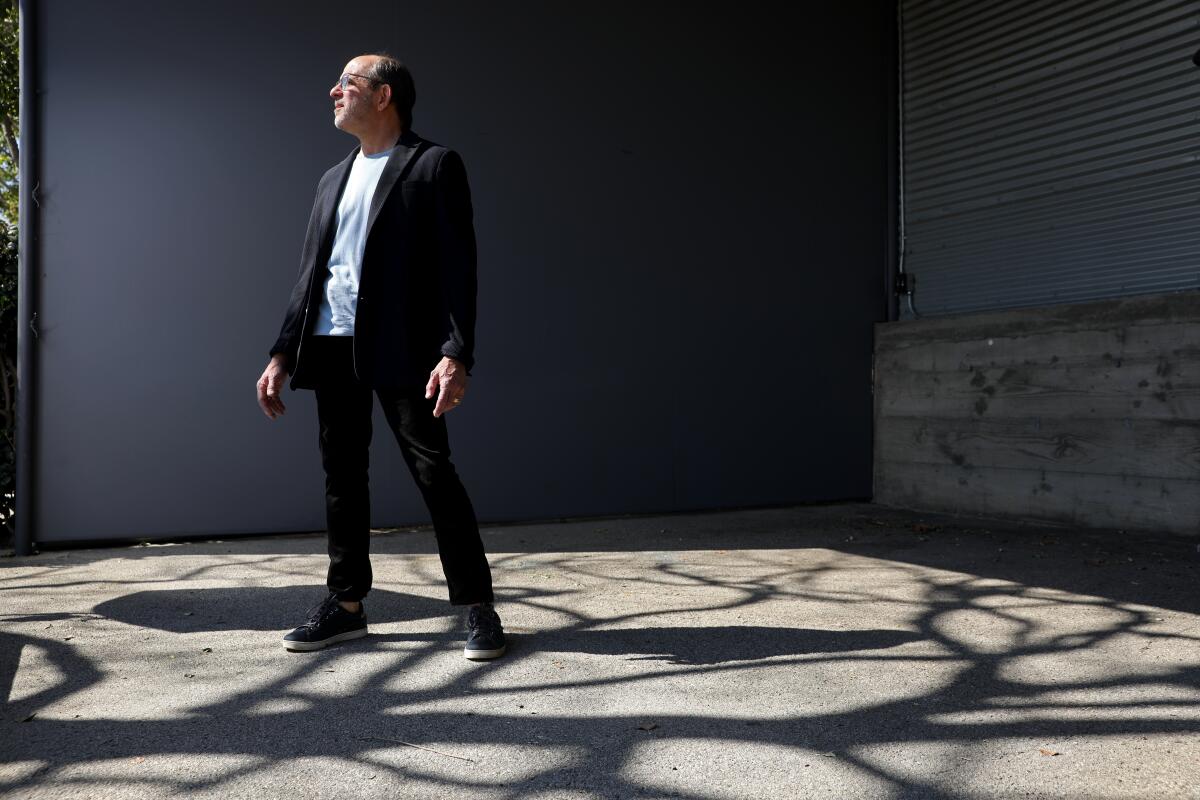
“Every time I get a job, I’ve got this funny feeling that it might be my very last job,” Jim Krantz says during a recent phone interview about life as a commercial and fine art photographer in the pandemic age.
With a solid reputation in the business and a portfolio of returning clients, Krantz represents a class of artists not broken but still shaken by COVID-19. Still, he says that it was genuinely scary when work began drying up in March last year. That’s what makes a new exhibition of his work at Danziger at Fetterman gallery particularly satisfying.
The show, which runs through April 3, is a high point for Krantz after a nearly year-long journey of self-discovery brought on by pandemic scarcity and isolation.
Gallerist James Danziger, who has represented Krantz since 2015, says that COVID has been particularly devastating for photographers because as a class of visual artists, they go out into world and interact closely with others for their livelihood. Galleries too have been greatly challenged, Danziger says, but at least their work can more easily migrate online.
Highly restrictive COVID protocols and astronomical spikes in liability insurance caused commercial photography — Krantz’s bread and butter — to drop off precipitously last spring. Eventually, the industry found its footing with drastically pared crews for shoots. Krantz went from having a small army of collaborators, including gaffers, stylists, hair and makeup artists and various assistants, to sometimes working with just one other person.
It was during these moments of comparative stillness that he began to find inspiration for a new way of photography. His revised formula?
A camera and some light. That’s how he started as a photography-obsessed teenager working near a stockyard in Omaha, and decades later it’s where he once again finds himself.
Krantz made a name for himself as a photographer with a keen eye for production action shots. He specializes in images of the West: Long, low horizons, dusty vistas and cowboys atop horses have come to define his sensibility, which is on display in the Danziger show. In his commercial work, that eye has long scored him jobs with high-profile brands that champion such iconography, including Marlboro and Coors.
Some of that work was famously appropriated by Richard Prince, who achieved success photographing photos from magazine ads and then enlarging and exhibiting them at galleries. A retrospective of his work, which included an uncredited image by Krantz, landed at the Guggenheim Museum in New York in 2007. It was in that fascinating vortex of art and context that Danziger became aware of Krantz and fell in love with his images of the West.
“What interests me in his work is his talent as an image maker,” Danziger says. “These are not pictures that anyone can take. There’s a high level of skill and artistry that go into these shots.”
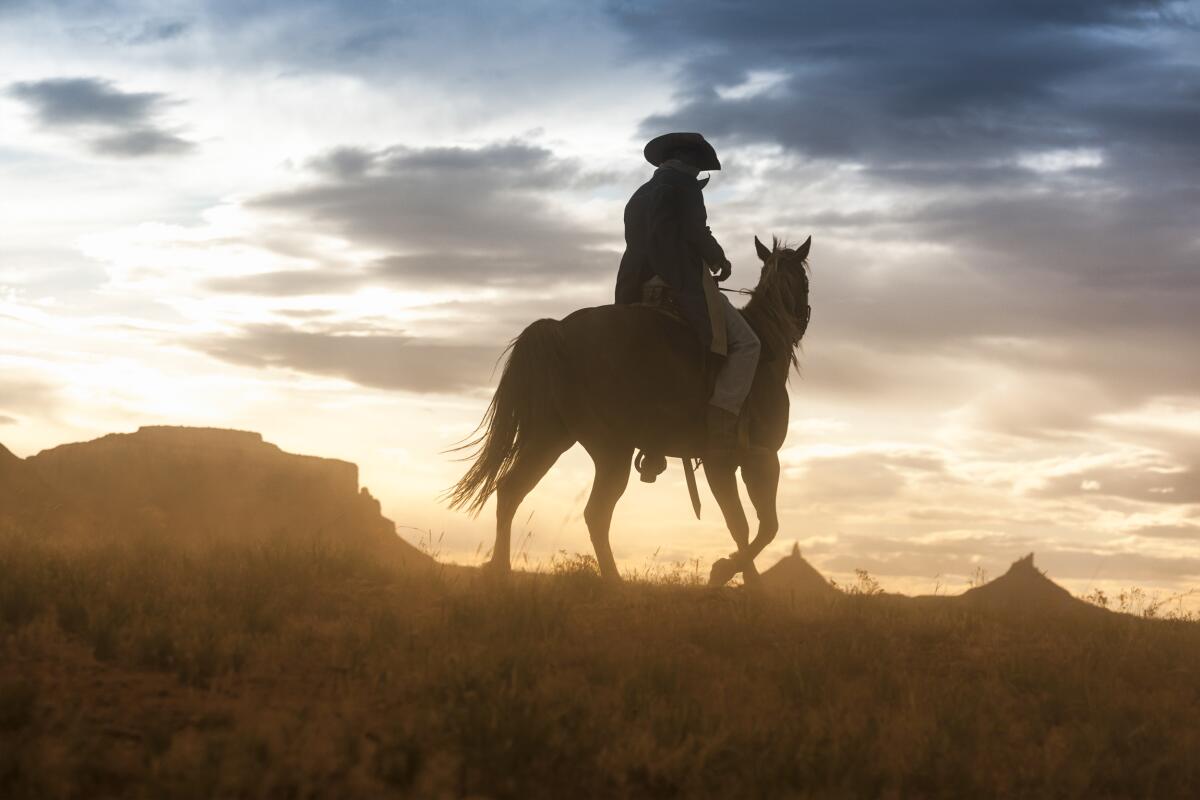
Exhibiting with Danziger over the years has allowed Krantz to concentrate on his fine art images, and when the pandemic hit, he had arrived at a place where he felt his commercial and personal work were beginning to meld in an unusual and advantageous way. The full stop necessitated by pandemic shutdowns heightened Krantz’s newfound awareness.
“In so many ways it’s been fantastic,” Krantz says. “It’s kind of like being in a moving car. You slam on the brakes and all the stuff on your seats falls on the floor. As you start picking up, you grab only what you need.”
That feeling — of being in constant motion and then stopping suddenly — has been expressed by many artists in the time of COVID. Some have gotten lost in the vast uncertainty of that pause, sidelined by a catastrophic lack of money and healthcare. Others, like Krantz, have found the freedom to breathe, and have experimented with form accordingly.
Looking for focus last spring and summer, Krantz trained his eye on what was directly in front of him: the people in his Beachwood Canyon neighborhood. The area, nestled in a leafy hollow below the Hollywood sign, has long attracted an eclectic stable of artists, writers, musicians, actors and other film and TV professionals.
Krantz knew their faces but not much more. Once their busy lives were confined to their homes, he started taking pictures of them in stay-at-home mode — learning about his neighbors in ways that would have been unimaginable before.
The resulting project, “Nineteen Stories” (after COVID-19), is a collection of 99 photos of life at a standstill in a singular pocket of a vast city during an unprecedented moment in history. It’s a personal project, at this point on view only on his website, JimKrantz.com.
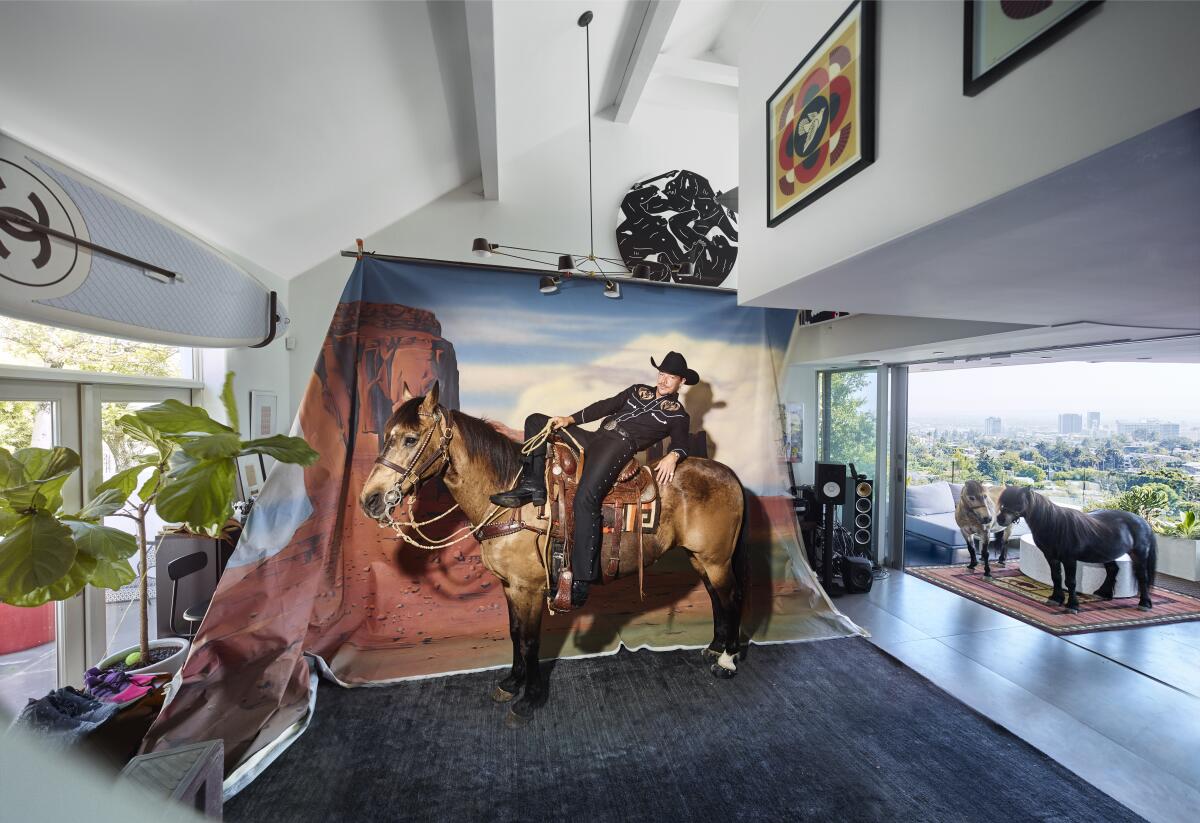
There are some famous faces, including that of DJ and producer Diplo.
Krantz borrowed a horse and photographed Diplo in his living room against a Western backdrop, a shot that Krantz says perfectly bridges his favorite subject with his new direction, and he is particularly thrilled with the result. In an email, Diplo characterizes Krantz as epitomizing “the unique artistic spirit of the neighborhood.”
The series also includes individuals and families of lesser renown but of equal intrigue, such as Los Angeles Master Chorale singer Cheryll Desberg and her husband, Peter, a university professor, psychologist and writer; local postman Barry Ibarra, an immigrant from the Philippines and a father of four who has delivered mail for 23 years; and author and screenwriter Tinker Lindsay, whom Krantz shot falling backward into her pool.
Lindsay described working with Krantz as an extraordinary experience. He reached out to her in the depths of the late-spring stay-at-home period when she feared coming out of her home and interacting with others. But once she looked at his work, and realized what a singular opportunity such a collaboration might present, she was all in.
“Storytelling comes in many forms, and I believe he’s a storyteller,” Lindsay says. “I’ve never done anything like this, so I thought, ‘Let’s do it.’ The result was one of the most gratifying experiences I’ve had.”
She says Krantz’s project bonded neighbors, sparking a connection that would not have been formed otherwise. Now, when she sees someone out walking, she recognizes her or him from their picture.
“I’m the one falling into the pool!” she’ll call out to them, and a smile will be shared.
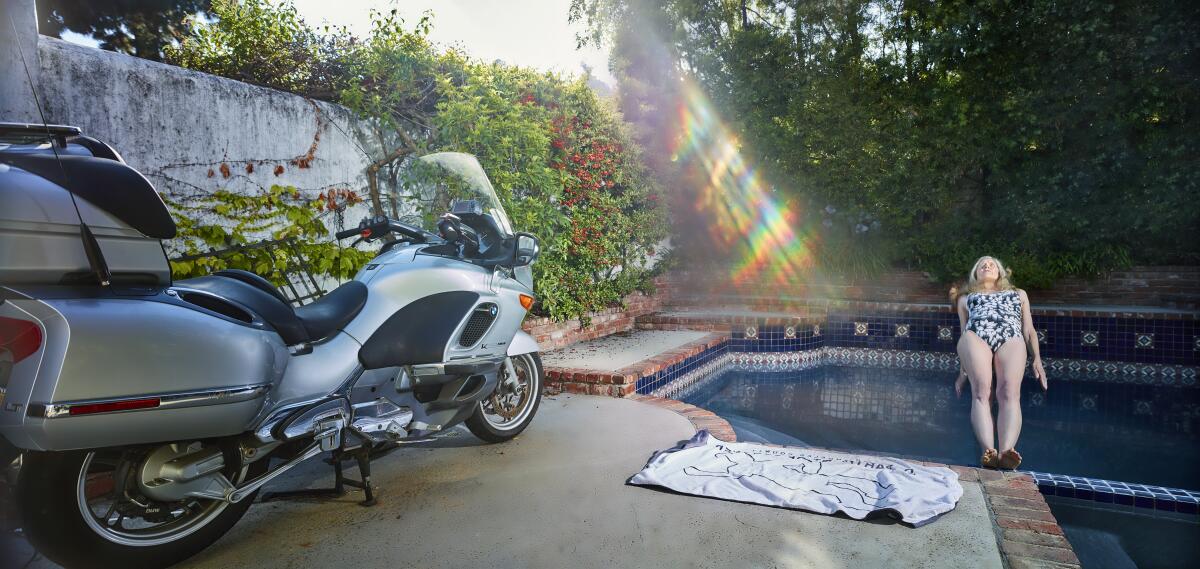
Lindsay succinctly sums up the oddness of making art with others in the masked-up COVID era. “I still haven’t seen his face,” she says of Krantz. “I have only seen his eyes and his camera.”
His eyes and his camera are all Krantz now needs, although he will again hire workers sidelined by the pandemic as budgets slowly come back online and it’s once again deemed safe to work with a crew. He doesn’t like to see how many colleagues remain out in the cold.
He won’t, however, forget the basics. He plans to keep operating in a more stripped-down, self-sufficient way, and he says he still has quite a bit to learn as he moves forward. Which brings him full circle to his still-favorite subject: the American West.
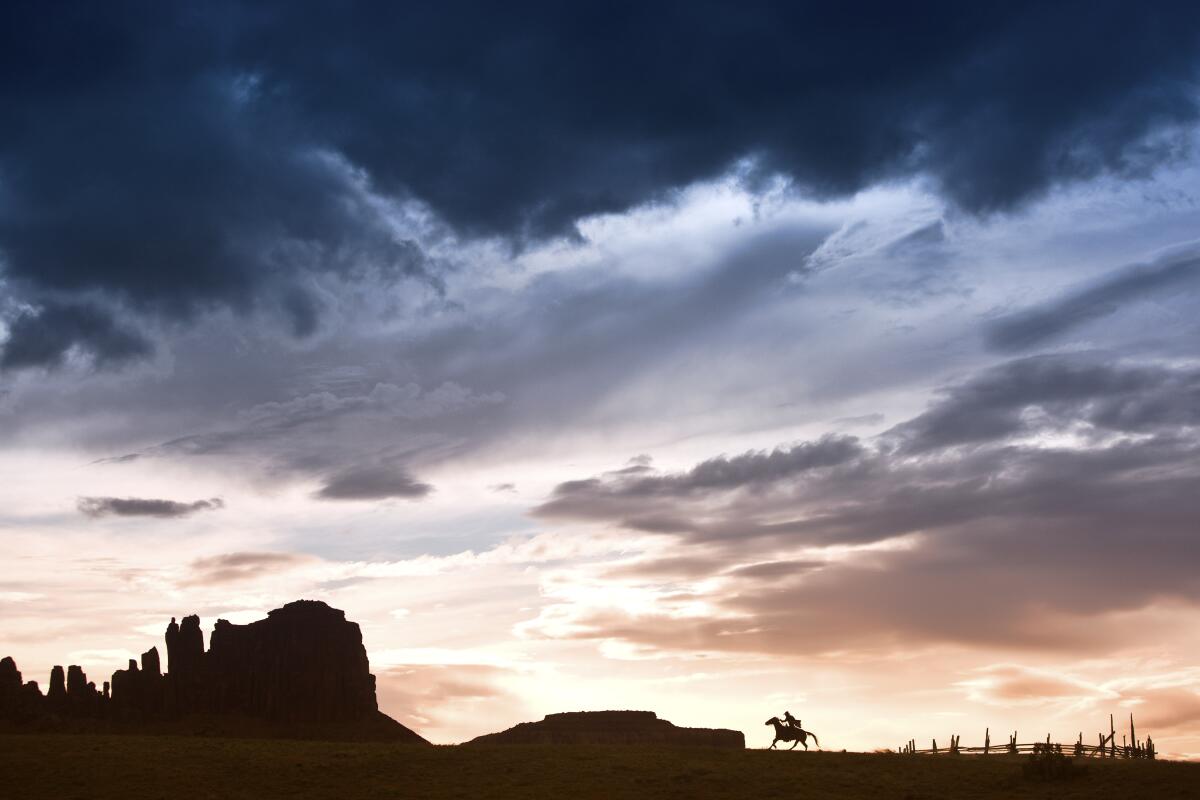
“Metaphorically speaking, these photos aren’t so much about cowboys,” he says. “They are about freedom — about being the master of your own destiny.”
'The Way of the West'
Where: Danziger at Fetterman in Bergamot Station, 2525 Michigan Ave., A1, Santa Monica
When: By appointment Tuesdays-Saturdays. Ends April 3.
Info: danzigergallery.com, (310) 453-6463
More to Read
The biggest entertainment stories
Get our big stories about Hollywood, film, television, music, arts, culture and more right in your inbox as soon as they publish.
You may occasionally receive promotional content from the Los Angeles Times.

